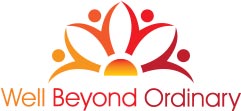 We don’t work or live in a vacuum. Whether you are ordering a cup of coffee from a barista, asking a co-worker for assistance on a project, or figuring out vacation plans with friends or family members, it involves others.
We don’t work or live in a vacuum. Whether you are ordering a cup of coffee from a barista, asking a co-worker for assistance on a project, or figuring out vacation plans with friends or family members, it involves others.
The people who populate our lives can have a significant impact, positive or negative, on our experiences, our energy, the results we generate, and our wellbeing. Of course, there are many communications strategies and skills we can use to improve relationships at work and at home. We’ll begin by looking at tension and flow in relationships.
The Seeds of Change
I first noticed the impact of tension versus flow in relationships when I took a very deep dive into studying Argentine Tango in Buenos Aires last December. I’d been dancing Tango for almost five years. But I wasn’t prepared for the core shift that happened so many miles from home. A month and many hours of lessons and social dancing after arriving in Buenos Aires, I finally had the ability to feel when I was dancing from a place of tension or ease.
When I am at ease, I am more able to hear the music and how my partner is inviting me to move. I am grounded and connected to my breathing. I am very present in the moment, not thinking about the move we just did or what might lie ahead in the dance. The energy flows, like water, back and forth between us without strain or drain. I feel a high level of trust in my partner.
On the other hand, when I’m dancing with tension, it limits me and, therefore, my partner. A follower senses what the lead is asking through the connection. When there is tension, it constricts the flow of energy, communication, and the connection. Instead of flowing like water, the dance develops jagged edges.
But I Don’t Dance Tango
What does my Tango experience have to do with flow and relationships? To have positive, supportive relationships that don’t stress us out or drain us, we need:
- Connection
- Trust
- Open and easy communication
- The ability to be fully present and listen to each other
When one or more of those things are lacking, either situationally or chronically, tension is present.
Reflection Point: Think about a current relationship. On a scale from 1 to 10 with 10 being the most and 1 being the least, score each of the four areas. How connected do you feel to that person? How much do you trust them? How easy is your communication? How well do you listen to each other?
The point of this exercise is not to judge or blame yourself or others. It is to help you:
- Identify relationships where you feel more ease
- Notice circumstances in relationships that cause tension
- Be aware of relationships that chronically cause you stress and rarely provide benefits
With these insights, you can make clear choices.
Becoming more aware of how you are expending your energy will help you make wiser choices and create priorities. If you find drama drains you, take time to evaluate how you are choosing to participate in those situations. Is there a way to engage without getting drawn into unnecessary drama? While you can’t always control who is on your team at work, you can choose not to participate in drama.
To be successful and live with more flow, we need to choose our relationships and the ways we engage wisely and manage the more challenging ones better.

